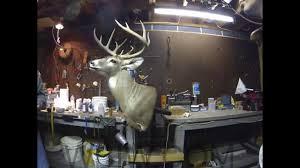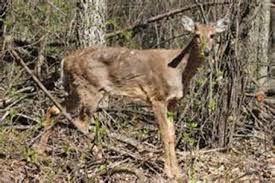
INDIANA – The Indiana DNR and the National Deer Association have started a program to collect samples for chronic wasting disease (CWD) testing with the help of taxidermists. In 2022, a limited number of taxidermists from select counties will be asked to participate based on available funding and coverage in the targeted areas.
CWD is a serious neurological disease affecting white-tailed deer, mule deer, elk, and moose. CWD is fatal in these species. CWD is spread through bodily fluids like feces, saliva, blood, or urine and is transmitted either through direct contact or indirectly through environmental contamination of soil, plants, food, or water. CWD is similar to mad cow disease in cattle and scrapie in sheep.

Each year, Indiana DNR staff collect tissue samples from wild deer (hunter-harvested or reported sick/dead) for CWD testing. Samples are collected from across the state to monitor the presence of CWD in Indiana. To date, CWD has not been detected in deer tested from Indiana.
Participating taxidermists will collect the two retropharyngeal lymph nodes, which are found in the neck of white-tailed deer, and provide the approximate age of the deer. The DNR will pay taxidermists $10 for each viable sample they collect. DNR will provide sampling supplies and training to all participating taxidermists. Taxidermists will use a provided sample datasheet with corresponding barcoded stickers to record the information that needs to be collected from the hunter.
Hunters will be able to look up the results of their deer’s CWD test online three to four weeks after the samples are picked up. Hunters will also be sent a letter with their deer’s results and a metal commemoration band as a thank you for participating.
For the 2022-23 deer season we will be targeting taxidermists in the following counties:
- Lawrence
- Monroe
- Daviess
- Martin
- Orange
- Morgan
- Allen
- Clay
- Crawford
- Elkhart
- Green
- Huntington
- Kosciusko
- Marshall
- Owen
- Putnam
- Wabash
- Whitley
If your county is not on the list, you can be placed on a waitlist in case there are extra spots. Every year, different counties will be included on the priority list.
For more information about the program or to participate, contact a DNR wildlife health biologist.
Learn more about Indiana’s CWD surveillance history in the annual Indiana White-tailed Deer Report.



